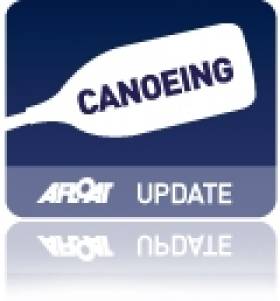Displaying items by tag: Killarney National Park
The 9,000 km northward land and sea journey made by the Irish cuckoo from the Congo Basin to Kerry has been highlighted with the return of a tagged cuckoo to Irish shores.
The bird’s migration in making “big sea crossings” has now been confirmed by the results of a new tracking project.
“Cuach KP”, one of the first such birds to be tagged, landed back in Killarney National Park after a winter spent in the rainforests of the Congo Basin in Central Africa.
The National Parks and Wildlife Service (NPWS) says that “Cuach KP”, along with two other Irish cuckoos, was tagged in Killarney National Park in May 2023.
 The Cuckoo's 9,000km journey home to Ireland for the summer months
The Cuckoo's 9,000km journey home to Ireland for the summer months
“He is the first to successfully make the 9,000km journey home for the summer months,” the NPWS said, noting the voyage covered “two continents and several countries”.
“On arrival into Ireland on Monday, “KP” made a short stop in Fermoy before making his way back to Derrycunihy, in Killarney National Park, the place where he was originally tagged before his release,” it said.
The NPWS points out that while the cuckoo has been well-studied during the breeding season, very little is known about the routes they take once they head off on migration or where in Africa they spend the winter months.
The Cuckoo Tracking Project was set up by the NPWS together with the British Trust for Ornithology (BTO) last year to better understand their migration patterns and the habitat pressures on the population.
The birds were given names and fitted with satellite tags so that their movements could be tracked.
Sam Bayley, NPWS conservation ranger, who set up the project in conjunction with British Trust for Ornithology, noted that “KP’s” trip ended with an “epic sea crossing from northern Spain direct to Ireland across the Bay of Biscay”.
“Big sea crossings haven't been recorded in cuckoos in Europe before, so that’s a really interesting twist.”
Reports from the satellite tagging system indicate that other cuckoos from the project are also on their way.
The NPWS says that “Cuach Torc” is currently in the vicinity of Brittany.
“ Cuach Cores” was the last of the three to leave, and latest reports suggest that the bird left Algeria this week and is “already making quick progress”.
Cuckoos, or “cuach” in Irish are a summer migrant to Ireland. Adult birds are resident here from April to early July, having spent the winter on the African continent.
They are a unique bird in Ireland as they lay their eggs in other birds’ nests, and don’t get involved in raising their young.
The cuckoo has seen a 27% reduction in breeding distribution here between the first national census, Bird Atlas (1968-1972), and the most recent Bird Atlas (2007-2011)
Winter Kayaking on the Lakes of Killarney
Bookings are now available for kayaking trips on the lakes of Killarney over the winter months of 2011-2012.
Kayaking on Lough Lein can be done all throughout the winter, the locale providing some great sheltered bays to paddle.
Irish Adventures runs kayaking trips on Lough Lein with a minimum of 2 people (€50 per person).
The route runs from Ross Castle with landings on Inisfallen Island and Ross Island to see the Bronze Age copper mines. There may even be a chance to get a glimpse of the white tailed eagle introduced to Killarney National Park.
All equipment (wetsuits, booties, waterproof jacket and hats) will be supplied.
To book call Irish Adventures at 087 419 0318 (morings 9.30am-12.30pm; afternoons 2pm-5pm) or e-mail [email protected].





























































